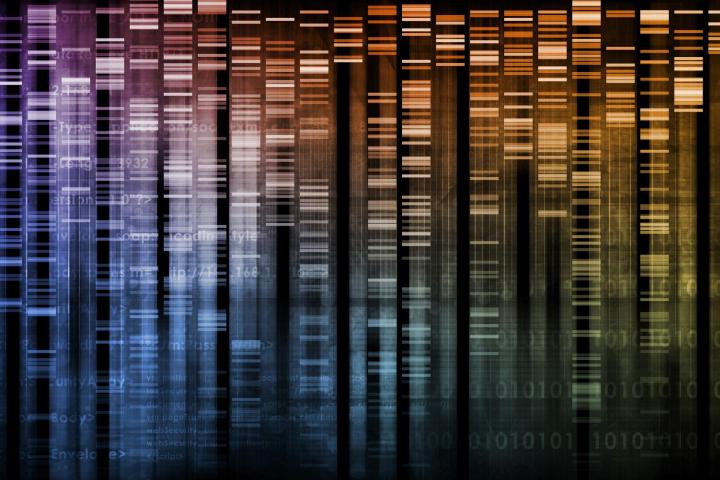
Since then, nanoscale-folding has also found more practical applications in medicine and electronics. Inspired by Rothemund’s work, a team of geneticists from Iowa State University have developed nanomachines which may be able to diagnose diseases in samples of blood.
Dubbed OPTIMuS (Oligo-Propelled Technology for Interrogating Molecular Systems), the dumbbell-shaped machines use nanoscale DNA springs to move a ring along a central cylinder or “handle.” The ring’s default position is attached to one side of the “dumbbell” via something like molecular velcro, but when a particular molecule interacts with the velcro, the ring is released. When that happens, anyone with a simple smartphone app can detect a macroscopic fluorescent signal and, therefore, detect a disease.
“[This] is the key part,” lead author Eric Henderson tells Digital Trends, “we can configure that ring-dumbbell interaction so that it can be made sensitive — weakened or strengthened — to the presence of a particular soluble molecule, such as the Ebola genome, a protein, or a small ligand.” When Henderson and co-author Divita Mathur programmed the nanomachines to look for mock Ebola virus, their devices successfully detected them. The team published its finding this month in Nature’s Scientific Report, ten years after DNA origami appeared as the journal’s cover story.
Currently, the self-assembling nanomachines can only successfully detect disease in vitro. “There are a lot of obstacles to getting a nanomachine made out of DNA to assemble and function in a living system,” Henderson says. Still, he sees his devices having many benefits for people in developing regions due to their relative affordability.
“When one calculates the cost of synthesizing DNA and the number of individual nano-devices required to carry out a robust analysis it is extremely cheap and can be made even cheaper — much cheaper — in bulk,” he says. “For example, we spend $2,000 to make enough nanobot material for 100,000 reactions. These are laboratory rates which are always far greater than commercial costs due to economies of scale … An even more striking, though somewhat contrived, cost evaluation is that, at laboratory cost rates, each individual nanodevice costs about one trillionth of a dollar. One penny buys you 10 billion nanobots!”
Henderson also points out how robust and flexible DNA proves to be. “They pull it out of ancient organic materials and it has an estimated half-life of 521 years,” he says. “And the chemistry is so elegant and well-understood that this particular polymer can be manipulated many different ways to make it compatible with biosensing a broad range of targets.”
Similar nanomachines have been used in high-resolution printing and drug delivery. Henderson and Mathur’s focus is currently on molecule detection but, as a self-described “fearless fringe iconoclast,” Henderson welcomes any and all experiment ideas — so long as they’re within the limits of the law.
Editors' Recommendations
- It’s all in the wrist: Wearables are helping to treat disease and disability
- Injectable electrodes may help treat everything from chronic pain to depression


